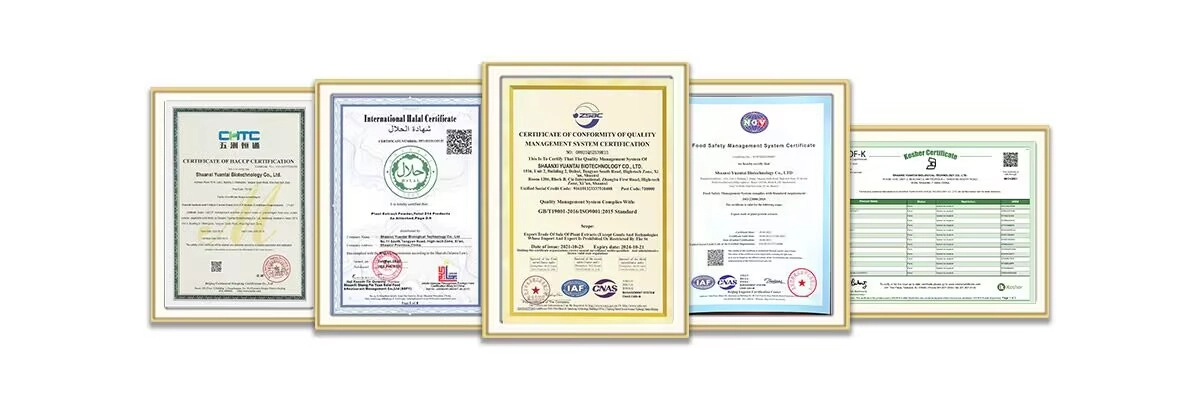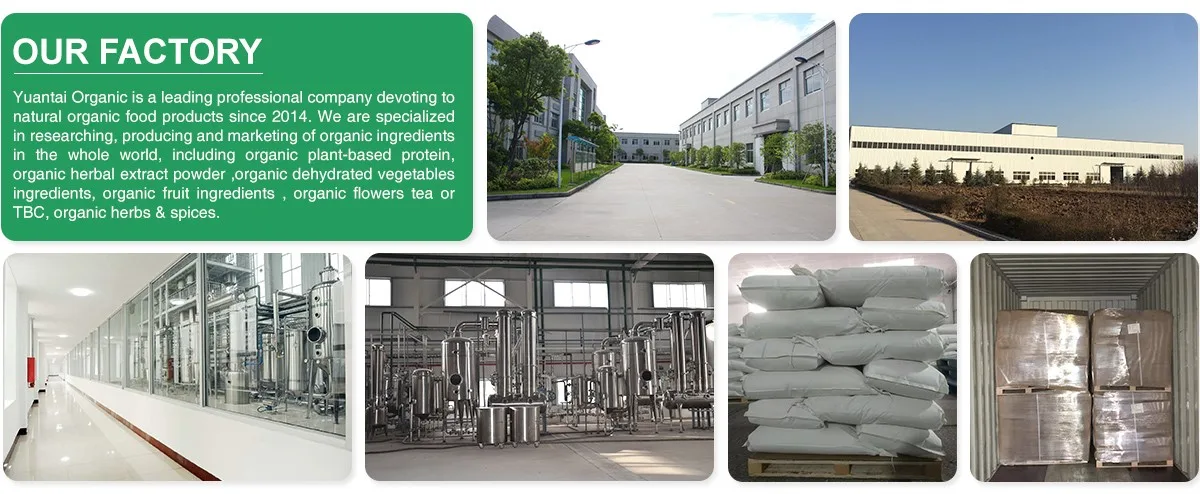Magnolol & Honokiol
Certification: EU&NOP organic certificate, ISO9001, ISO22000, Kosher, Halal, HACCP
Delivery speed: 1-3 days
Stock: In stock
Payment method: T/T, VISA, XTransfer, Alipay...
Shipping: DHL.FedEx, TNT, EMS, SF, sea freight, air freight
- Fast Delievery
- Quality Assurance
- 24/7 Customer Service
Product Introduction
What is Magnolol & Honokiol?
It is a biologically active plant component isolated from the root and stem bark of Magnolia officinalis, a plant of the Magnoliaceae family. It has antifungal, antibacterial and antioxidant effects. It is a fine brown to white powder, and the monomer is a colorless needle-shaped crystal with a melting point of 102°C. It is easily soluble in common organic solvents such as benzene, chloroform, and acetone, difficult to dissolve in water, and easily soluble in dilute caustic alkali solutions. It has a light and elegant characteristic aroma of Magnolia officinalis and obtains sodium salt. Phenolic hydroxyl groups are easily oxidized, while allyl groups are easy to undergo addition reactions. It has a special and lasting muscle relaxant effect and a strong antibacterial effect, which can inhibit platelet aggregation. It is mainly used as an antibacterial and antifungal drug in clinical practice.

Biological activity:
1. Antibacterial effect, it is a pure natural broad-spectrum antibiotic
Its antibacterial components are stable. In vitro experiments have shown that it has inhibitory effects on pneumococci, hemolytic streptococci, Staphylococci, Escherichia coli, etc.
Magnolol has a strong antibacterial effect, and has obvious effects on Shigella dysenteriae, Salmonella typhi, and dental caries bacteria, among which the effect on dental caries bacteria is particularly prominent.
Magnolol & Honokiol have anti-multiple pathogenic fungi, and can significantly inhibit human pathogenic fungi such as Candida albicans, Aspergillus niger, flocculent epidermal fungi, Trichophyton yellow, and Microsporum gypseum. The anti-dermatophyte activity of magnolol is higher than that of streptomycin sulfate, and the anti-mentopycosis activity is higher than that of amphotericin B.
The study proved that magnolol has analgesic and anti-inflammatory effects through two analgesic experiments (the effect of magnolol on the tail-flicking reaction of mice caused by thermal pain stimulation, and the effect on the twisting reaction of mice caused by acetic acid) and three anti-inflammatory experiments (the effect of magnolol on the permeability of mouse abdominal capillaries increased by acetic acid, the effect on the plantar swelling of mice caused by carrageenan, and the effect on the ear swelling of mice caused by xylene).
2. Natural preservatives
It has the characteristics of high efficiency in inhibiting various bacteria, fungi, and low toxicity. At the same time, magnolol was added to the cream to test its actual antibacterial and preservative effects. The results showed that after adding magnolol, the product had a normal aroma, a pH of about 6.2, which was within the normal range, and the cold and heat resistance experiments showed that the formula had good stability, proving that magnolol had good compatibility when used as a preservative.
3. Muscle relaxant effect
It has been proven through mouse experiments that it can exert a strong antispasmodic effect.
The spinal reflex experiment on chickens showed that it has a special and lasting muscle relaxant effect.
4. Effect on the digestive tract
Magnolia bark and its volatile oil are bitter and can stimulate the taste, reflexively causing saliva, gastric juice secretion, and gastrointestinal peristalsis to accelerate, and have a stomach-strengthening and digestive-aiding effect.
The water immersion stimulation method was used to cause stress-induced acute gastric ulcers in rats, and the gastric juice secretion of rats was measured by intragastric perfusion. The gastric bleeding of stress-loaded rats under artificial gastric juice perfusion conditions was measured. The results showed that magnolol has the effect of preventing stress-induced gastric dysfunction.
5. Anti-ulcer effect
It has a significant preventive effect on stress gastric ulcers caused by water immersion in rats. Atropine and cimetidine have a strong preventive effect on stress ulcers, but are ineffective against stress gastric bleeding alone, while it has a preventive effect. Its anti-ulcer and anti-secretory effects can be partly attributed to its central inhibitory effect, which is different from the effects of atropine and cimetidine.
6. Effects on the cardiovascular system
It can inhibit the absorption of cholesterol and play a preventive and therapeutic role in atherosclerosis.
It has strong antioxidant effects and free radical scavenging activity. Its cardioprotective ability may be related to its antioxidant ability and inhibitory ability on granulocytes.
Magnolol & Honokiol have anti-arrhythmic effects. }
7. Protective effect on cerebral ischemia
The large-scale production of free radicals is one of the important factors in cerebral ischemia-reperfusion injury. It can significantly increase the activity of SOD in the brain tissue of MCAO rats, reduce the generation of lipid peroxidation product MDA, protect cell membranes from free radical damage, and at the same time increase the activity of LDH in ischemic brain tissue, inhibit the increase of lactic acid, and reduce lactic acid accumulation. In addition, it can effectively improve the behavioral dysfunction of MCAO rats after reperfusion, improve muscle tension, reduce softening foci, reduce the scope of cerebral infarction, reduce nerve cell necrosis, and reduce brain water content and improve brain edema. In the mouse hypoxia tolerance and acute cerebral ischemia model, it can significantly prolong the survival time of mice hypoxia and ischemia, and improve the hypoxia tolerance of mice. These show that the purpose of protecting brain damage can be achieved by improving energy metabolism and reducing the generation of oxygen free radicals.
8. It has a preventive effect on light-induced skin aging (anti-inflammatory, anti-allergic, antibacterial)
9. The active ingredients play an antioxidant role by scavenging oxygen free radicals. According to the antioxidant pharmacokinetics study of Magnolia officinalis extract, it has a strong antioxidant effect.
10. Magnolol & Honokiol have anti-anxiety effects, and honokiol is stronger than magnolia officinalis.
Effects:
1. In the pharmaceutical field, it has become an important raw material for the development of new drugs with its multiple functions such as antibacterial, anti-inflammatory, and antioxidant. Studies have shown that it has a strong inhibitory effect on a variety of pathogens and can effectively treat diseases caused by bacterial infections, such as periodontitis and skin acne. At the same time, its anti-inflammatory effect is also widely used in the preparation of anti-inflammatory drugs to help relieve inflammatory symptoms and promote tissue repair. In addition, the antioxidant properties can also remove free radicals in the body and protect cells from oxidative damage, which has positive significance for delaying aging and preventing cardiovascular and cerebrovascular diseases. ,
2. It also performs well in the field of health care. As an additive to health foods, it can enhance the body's immunity, improve sleep quality, and protect cardiovascular and cerebrovascular health. For example, in liver protection health products, it can reduce the burden on the liver and promote liver cell repair; in anti-depressant health products, its anti-anxiety and anti-depression effects help relieve emotional stress and improve mental health.
3. In addition to the pharmaceutical and health care fields, it has also been widely used in cosmetics and personal care products. Its antibacterial, anti-inflammatory and antioxidant properties can protect skin health and prevent and treat skin diseases. For example, in anti-acne skin care products, it can inhibit the growth of harmful bacteria such as Propionibacterium acnes and alleviate acne symptoms; in whitening skin care products, its inhibitory effect on tyrosinase activity helps to reduce melanin production and achieve whitening effects.
4. In addition, it also has potential application value in the food industry. Its antioxidant properties can extend the shelf life of food and prevent food from oxidative deterioration; and its antibacterial effect can inhibit the growth of microorganisms in food and ensure food safety.
In summary,Magnolol & Honokiol have shown extensive application potential and significant effects in many fields such as pharmaceuticals, health care, cosmetics and food.
Certificates
YTBIO is developing in an all-round way. We have our own factory, quality inspection and R&D team. We are committed to providing customers with the best quality Magnolol & Honokiol and services. It is our original intention to let every consumer enjoy high-quality and healthy products. If you have any needs or questions about our products, please feel free to contact us and we will reply you as soon as possible.

Packaging and Shipping


Our Company and Factory

_1737093401309.png)

